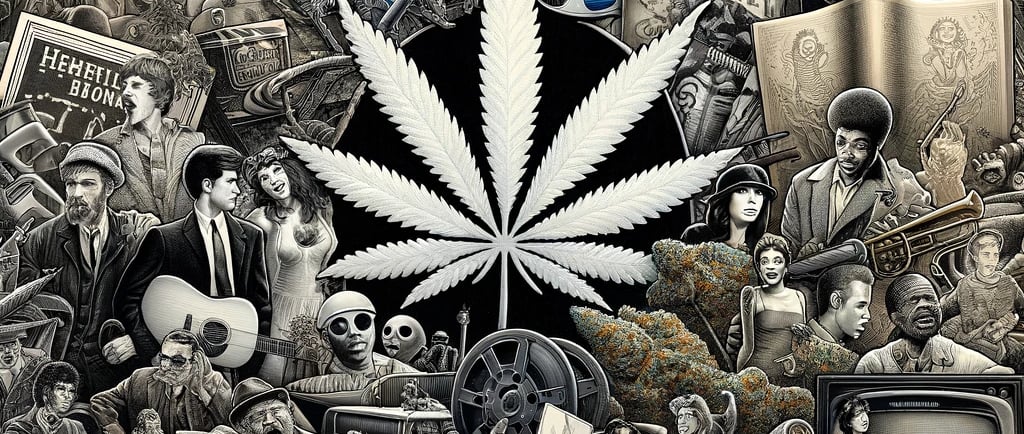Cannabis in Literature and Film: A Cultural Lens
The portrayal of cannabis in literature and film has significantly influenced public perception and cultural attitudes towards the plant. From the counterculture movements of the 1960s to contemporary narratives, cannabis has been a symbol of rebellion, enlightenment, and, at times, caution. This article explores how cannabis has been depicted in various literary and cinematic works, reflecting broader societal attitudes and the evolving dialogue around cannabis.
CANNABIS GUIDE
2/25/20242 min read


Early Depictions
In early 20th-century literature and film, cannabis was often portrayed in a negative light, associated with vice and moral decay. These depictions were influenced by the era's prohibitionist attitudes, as seen in the infamous 1936 film "Reefer Madness," which dramatized the supposed dangers of cannabis use.
The Beat Generation
The 1950s and 1960s saw a shift with the Beat Generation, where writers like Jack Kerouac and Allen Ginsberg celebrated cannabis as a means of spiritual and artistic exploration. In their works, cannabis was a tool for breaking free from societal constraints and accessing deeper truths.
The Counterculture Movement
The counterculture movement of the 1960s and 1970s further cemented cannabis's association with rebellion and social change. Films like "Easy Rider" and books such as Tom Wolfe's "The Electric Kool-Aid Acid Test" depicted cannabis as part of a larger rejection of mainstream values, intertwined with the pursuit of freedom and consciousness expansion.
Contemporary Narratives
In contemporary literature and film, cannabis is often portrayed more neutrally or positively, reflecting its increasing normalization and legal acceptance. Modern works explore the complexities of cannabis culture, the nuances of its legal status, and its medicinal uses, moving beyond the simplistic binaries of earlier depictions.
Medicinal Use: Films like "Dallas Buyers Club" and documentaries such as "Weed" by Dr. Sanjay Gupta have highlighted cannabis's medicinal potential, shifting the conversation towards its health benefits.
Comedy and Normalization: The rise of cannabis-themed comedies, like "Pineapple Express" and TV shows such as "Weeds," reflects a more relaxed attitude towards cannabis, emphasizing humor and the ordinariness of its use in daily life.
The Impact on Public Perception
The evolution of cannabis in literature and film mirrors changing societal attitudes. By showcasing the diverse experiences and implications of cannabis use, these mediums have played a crucial role in destigmatizing the plant, advocating for its medicinal benefits, and influencing policy debates.
Challenges and Criticisms
Despite more nuanced portrayals, some critics argue that literature and film still often fail to address the complexities of cannabis use, including its potential for abuse and the social justice issues surrounding its legalization.
Conclusion
Cannabis's journey through literature and film provides a fascinating lens through which to view cultural shifts and societal attitudes towards the plant. As the dialogue around cannabis continues to evolve, literature and film will undoubtedly play a pivotal role in shaping and reflecting these changes, offering insights into the human experience with this ancient and controversial plant.
